Alaska
Alaska Airlines Overhauls Mileage Plan: Faster Elite Status, New Perks, And Unlock Better Award Flights – View from the Wing
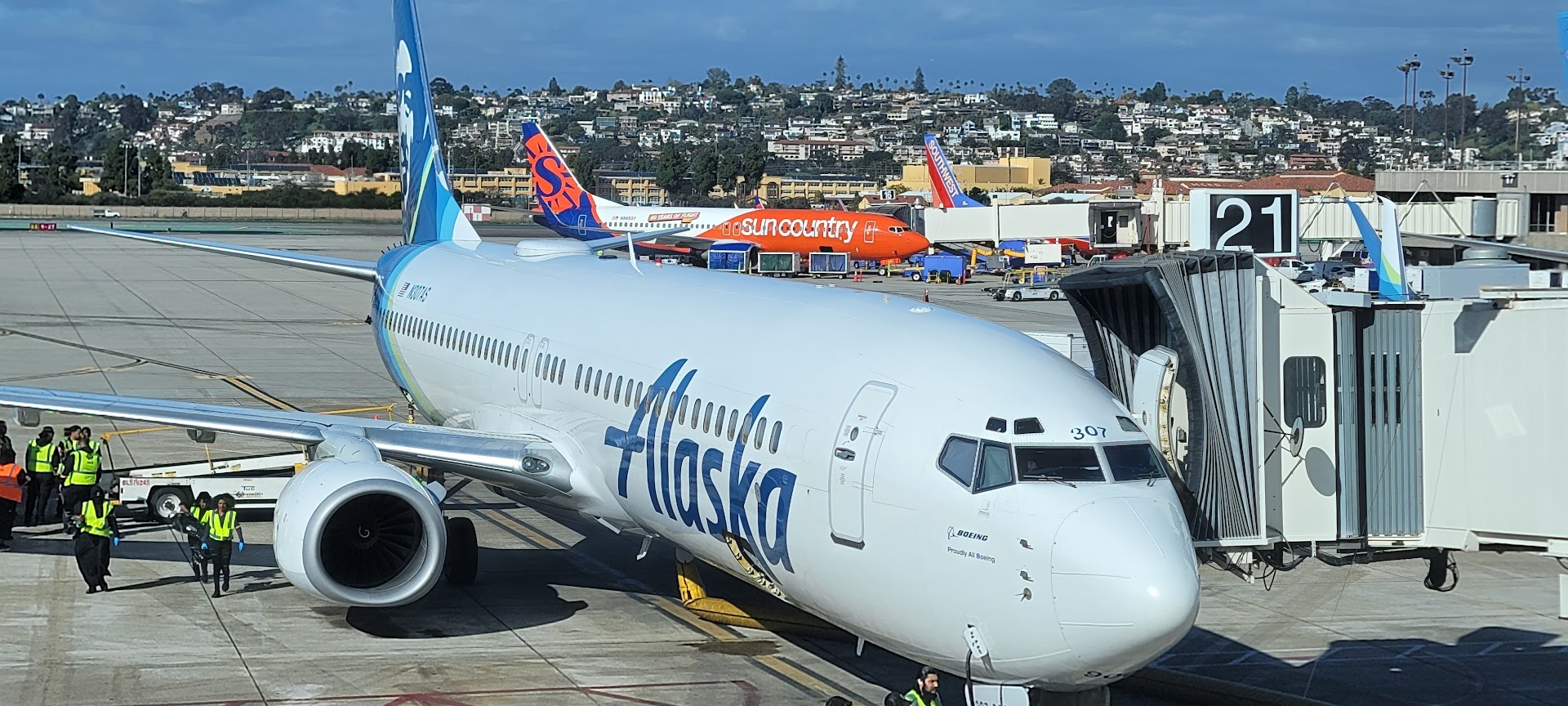
Alaska Airlines has announced changes – nearly all improvements – to its Mileage Plan program for 2025. I spoke with Alaska’s Vice President of Loyalty, Alliances, and Sales Brett Catlin about the effort – which he calls a “phase one.”
- In this first phase, he acknowledges, they’re taking what he views as the best recent innovations from other programs – like counting all activity with the program towards status, making award travel count, and rewarding customers with new benefits in between status levels.
- Then phase two will come in six to nine months and will be more “innovative stuff” that involves engaging and rewarding customers who are just beginning to transact with Alaska.
Put another way, he sees Alaska as a very strong program for those who are very frequent flyers, and with a lot of miles. Today’s changes are about doing more for this group.
The next set will aim to “get more people in funnel [going from] first flight to elite status.” For instance, just as they’ve taken the bundle of Club 49 benefits for Alaska residents and brought that concept (Huaka’i by Hawaiian) to Hawaii with discounts, free bags, and special co-brand cardmember offers, they see the possibility of extending the idea to a broader customer group as well.
Alaska Airlines
Award Travel Counts Towards Status
Award travel flown beginning January 1, 2025 will count towards status-earning. Qualifying miles will be earned based on distance flown both for Alaska Airlines flights and for partner flights when booking travel using Mileage Plan miles. (Alaska Airlines flights booked using miles from other frequent flyer programs, like American AAdvantage or British Airways Executive Club, will not earn status credit.)
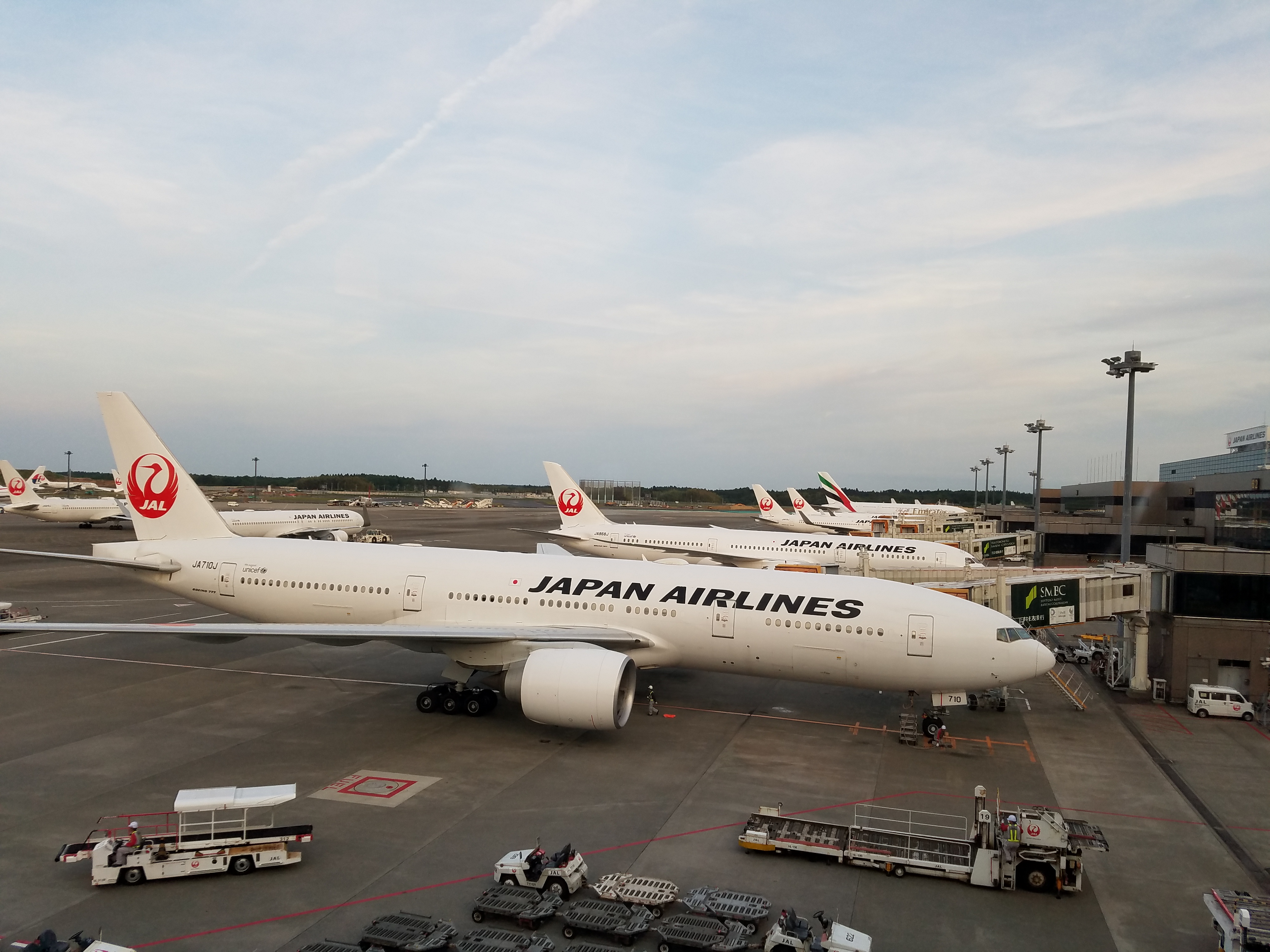
Japan Airlines, Tokyo Narita
A Qatar Airways roundtrip award between Los Angeles and the Maldives will earn 20,720 qualifying miles.
Virgin was first with award travel counting towards status and there was a strong logic since members pay hefty fuel surcharges for these flights.
Then Delta SkyMiles followed suit, but neither Delta nor Virgin credited award travel on partner airlines like Alaska will. Delta got that started only this year. As a technical matter, this is challenging. There’s an Alaska ticket number, and a Mileage Plan number in the reservation, but no one else has managed this before.
All Partner Activity Counts Towards Status
Last year, Alaska Airlines introduced credit card spending as a way to earn credit towards status, capped at 20,000 qualifying miles.
Airlines like American, Delta and United have all taken steps towards counting credit card and sometimes other partner transactions, recognizing that those are far higher margin for the airline than actually flying. American has gone the farthest, with credit from card spend uncapped and accumulating status credit the fastest.
After dipping their toes in this water for 2024, Mileage Plan is expanding how non-flight activity will count towards status-earning in 2025.
- Alaska Visa cardholders will earn one elite-qualifying mile for
every $3 spent, up to 30,000 qualifying miles each year. - Other partner activity – like online shopping and Lyft rides – will earn 1,000 qualifying miles per 3,000 redeemable miles earned (with no cap).
American roughly doubled the qualifying thresholds and started awarding one loyalty point (status credit) per redeemable mile earned. Alaska isn’t quite as generous as that but partner transactions will begin going much further.
Brett Catlin tells me that they’re limiting how much credit card spend can contribute to status “to make sure we can manage” the elite pool, delivering benefits both for those earning status exclusively by flying and also given any increase in the elite pool from those who newly qualify with this expanded criteria. While this cap is “the permanent offer,” over time we may see the cap go up.
I asked him about language about “qualifying partners” counting, thinking that this might be akin to only some partners at American AAdvantage counting (e.g. Bask Bank savings account-earning usually hasn’t counted) but he assures that this is simply meant to account for transfer relationships like Bilt (points transfers don’t count, but “everyday partners all count.”
New Milestone Moments Earned Between Elite Tiers
I think that Hyatt did the best job six year ago of making some benefits easy to earn, and benefits continue to accrue, at small increments of activity. For them, every 10 hotel nights earns additional perks (including elite nights from credit card spend).
American Airlines has moved in this direction, too, with their Loyalty Point Rewards. Members accrue free seat assignments and Avis (and soon Hyatt) status as they strive for higher status levels, and additional perks as they keep flying beyond those levels.
Alaska is adopting this model as well, with benefits starting after just 10,000 qualifying miles.

- 10K milestone Pick one (1):
- 750 bonus miles
- Pre-order a complimentary meal for your flight
- One (1) complimentary Wi-Fi pass
- Try MVP status for a trip
- Earn double miles with non-air partners
- Upgrade your next Avis rental
- 2,500 bonus miles
- $25 off a future Alaska flight
- Four (4) Wi-Fi passes
- Try MVP Gold status for a trip
- $100 off an Alaska Lounge membership
- 5,000 bonus miles
- 10,000 miles off an Extras redemption
- Gift MVP for a trip
- One (1) complimentary Lounge day pass
- Two (2) upgrade certificates
- 15,000 bonus miles
- 25,000 miles off an Extras redemption
- Two (2) complimentary Lounge day passes
- Two (2) upgrade certificates
- Gift MVP Gold status for a trip
- Nominate someone for MVP status
- 10,000 elite-qualifying miles rolled over
- 50,000 bonus miles
- 75,000 miles off an Extras redemption
- Alaska Lounge+ membership
- Complimentary Wi-Fi on every flight
- Four (4) upgrade certificates
- Nominate someone for MVP Gold status
- 15,000 bonus miles
- 25,000 off an Extras redemption
- Two (2) complimentary Lounge passes
- Two (2) upgrade certificates
- 10,000 elite-qualifying miles rolled over
30K milestone Pick one (1):
55K milestone Pick two (2):
85K milestone Pick two (2):
100K Choice Benefit: Pick one (1):
150K / 200K / 250K milestones Pick two (2):
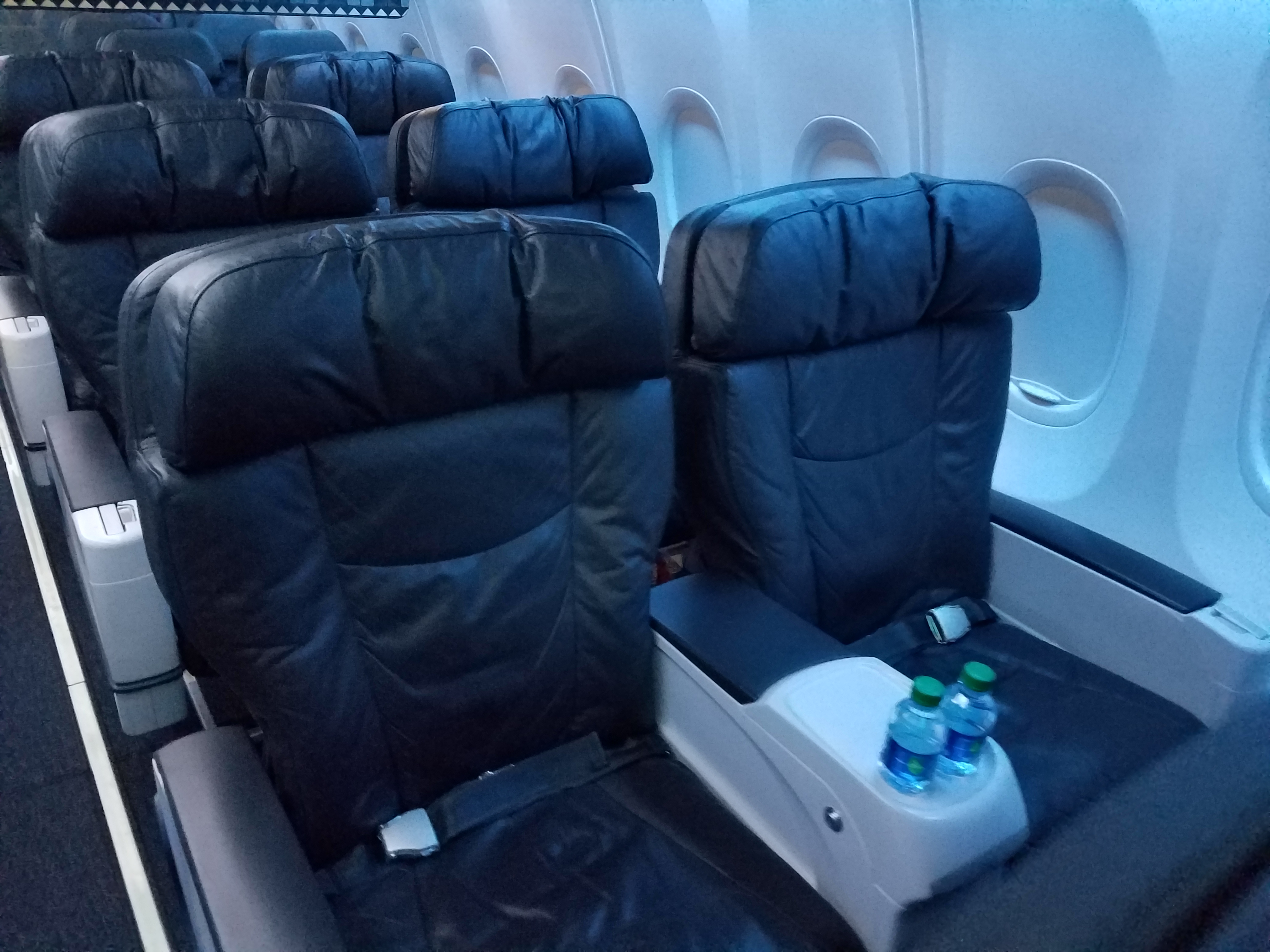
Alaska Airlines First Class
If you qualify for a milestone perk that lets you make two selection, both can be of the same thing if you prefer (for instance, upgrade certificates twice).
It’s interesting to see rollover qualifying miles as a milestone choice, accelerating status earning in the following year. That’s something that Delta offered for many years – and eliminated for this year.
Obviously the biggest benefits are at the highest thresholds, encouraging members to go above and beyond their status level and keep flying, spending, and engaging the program. Still, even something like a free pre-order meal on board can be meaningful.
And these give early access to trying a status that hasn’t yet been earned. That will be more generous than advertised. For instance, a temporary MVP status is actually valid for 14 days – and they won’t advertise it, but it will be be recognized by partners as well (they’re loathe to make promises here, since partners won’t see status instantly, it’s refreshed less than daily).
Meanwhile, a benefit like earning double miles on partners is far more generous than the comparable offer from American (20% Loyalty Point bonus at 60,000 qualifying points and 30% bonus at 100,000). Catlin tells me that they are still “working through how long” this will be valid for, but it will be “months not weeks.” Credit card earn won’t be doubled.
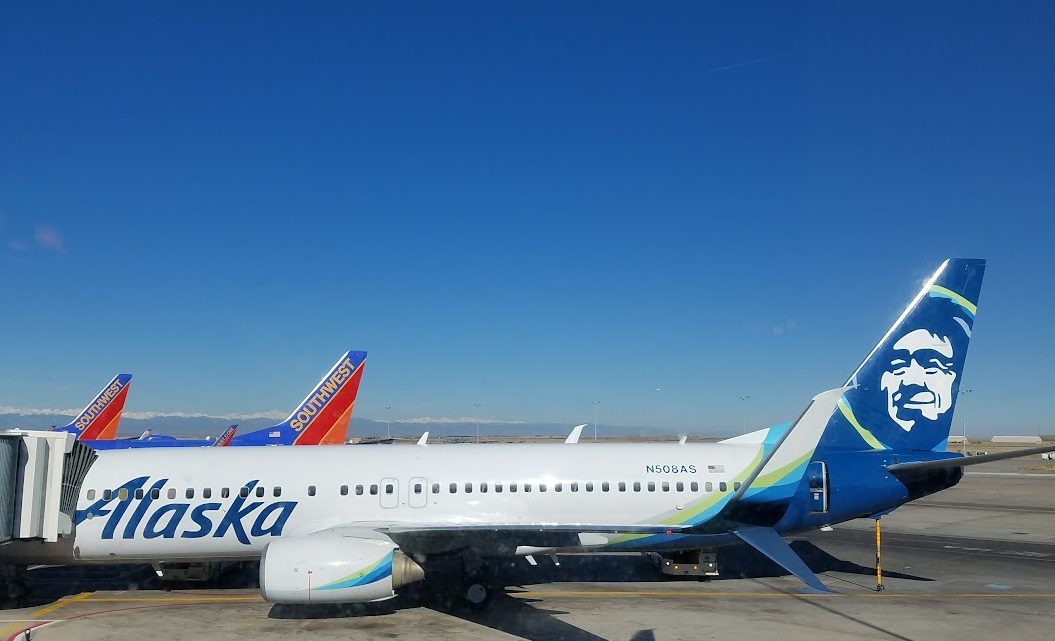
Alaska Airlines
Multi-Airline Redemptions Finally Coming
Alaska Airlines has been talking about letting members combine different airline partners on a single award ticket for more than three years. They’ve joined oneworld, and introduced a new distance-based award chart which is meant to support this. We’ve still been waiting. Currently two different airline partners means two different awards.
However Alaska will finally be adding multi-carrier redemptions “this winter” to allow mixing and matching partners on a single one-way journey. At first they will support this only between the U.S. and Europe, and then “throughout next year” this will expand across regions and partner airlines.
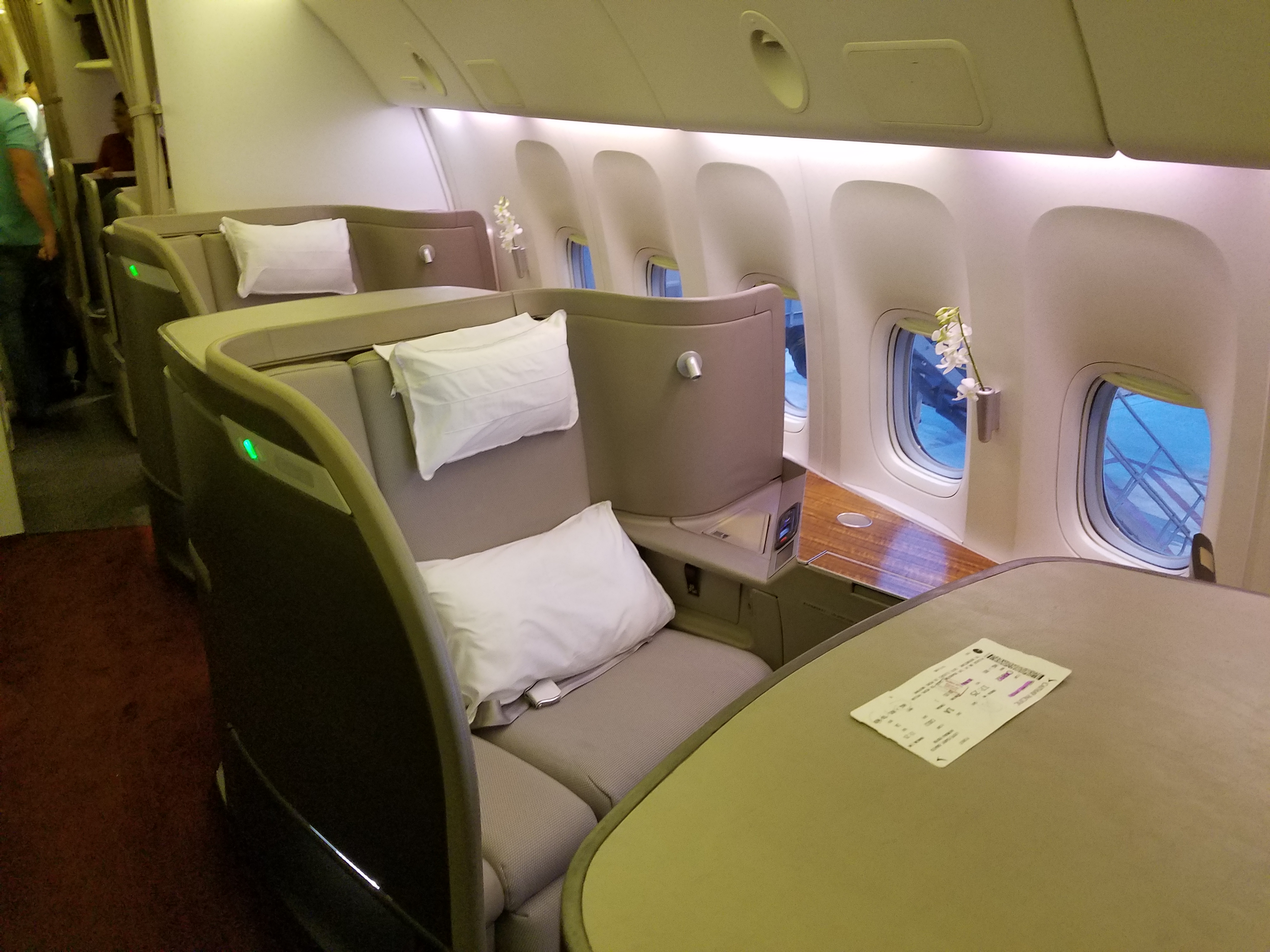
Cathay Pacific First Class
Simplified Earning For Partner Flights
Right now each airline partner earns Mileage Plan miles at a different rate, and also a different rate if you book as an Alaska Airlines codeshare versus booking directly through that airline.
Alaska is going to a single chart for flights booked through Alaska channels: 100% of flown miles in coach (non-basic economy) and 150% for premium economy; 250% for business class; 350% for international first class. That’s harmonizing at generally the top end of the scale.
However in order to earn at that rate, you’ll have to book through Alaska. When some partners got huge bonuses for premium cabin travel seven years ago, Catlin explains, Alaska didn’t offer to sell those flights directly. They now sell 23 partners online, and will go to 30 next year. They don’t want 30 separate earn charts for this – but if you book a partner flight through the partner you’ll see lower earnings.
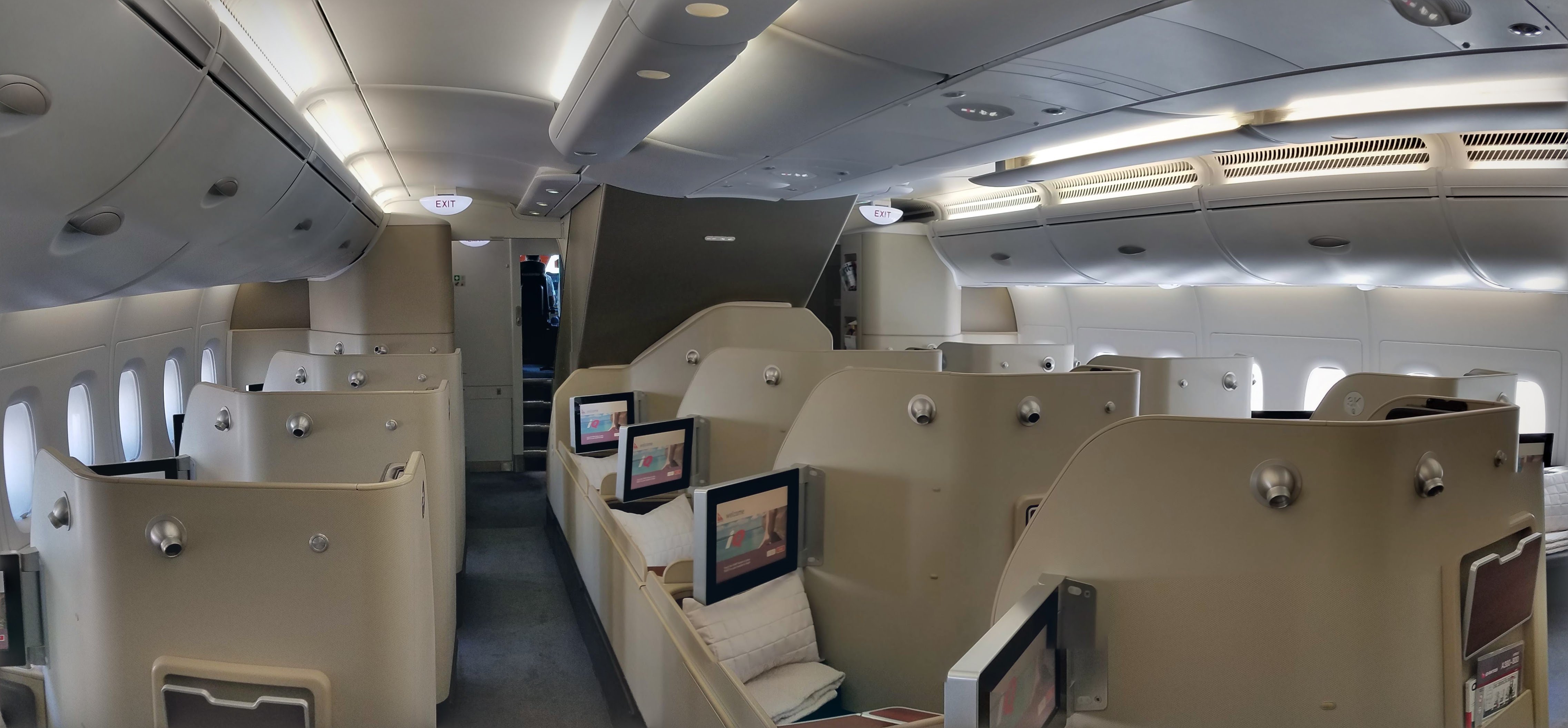
Qantas A380 First Class Cabin
Introducing Miles for Experiences
Next year Alaska will introduce “Extras” which will be their experiences and events platform.
This is something that numerous programs, especially in the hotel space but also United and Delta offer. Some of these are cool, but most members don’t pay attention to them – the odds that there’s a good fit that fits a schedule is often perceived a slow, pricing can be high, and they’re cumbersome to discover.
That’s almost a good thing, because otherwise demand for a limited availability product might be too much to handle. The value in brands delivering unique experiences is that their relationships can create connections with other brands and people that a member couldn’t access on their own – play tennis with a world champion, special VIP access to a concert, cooking lessons from a famous chef.
Catlin recognizes that this “Has to scale” and it needs to be “broadly interesting” to members. He calls out SPG Moments are their inspiration, and thinks that “really interesting, unique content, creates a halo or perception that Alaska miles unlock experience.”
Changes To Upgrade Priority
“Later in 2025” Alaska will re-order how they sort upgrade priority. Within each elite tier, million milers will be at the top of the list and then members will be prioritized “how many elite-qualifying miles they’ve earned – not by how much they paid for their ticket.”
I pressed for details on how elite qualifying miles will be calculated for this. I was told that initially they will “sort based on in-year EQMs” (how many have been earned so far in 2025) but ultimately in 2026 they’ll switch to “rolling EQMs” which takes some additional technical work, since it’s a new, separate qualifying miles counter to look back a year from any given point.
The move to recognize million milers at the top of the upgrade list is interesting. It’s literally the opposite of what American Airlines does, where status as a result of lifetime loyalty is at the bottom of the upgrade list – since only qualifying activity during the most recent 12 months matters.
Catlin explains that Alaska’s million miler status is “difficult to earn” since it counts flown miles only on Alaska. They’ve only just had their first 3 million miler though several more are on the cusp.
Additionally, while Alaska doesn’t waitlist for confirmed upgrades – it has to be available for immediate confirmation when you call in – they’re going to introduce automatic alerts for members to do this so they don’t need to subscribe to third party tools to find out when space is available.
While a “waitlist would be ideal” and something they “want to work towards,” addressing an immediate member pain point has them automatically notifying members who are on flights where space opens when the member has a guest upgrade certificate in their account.
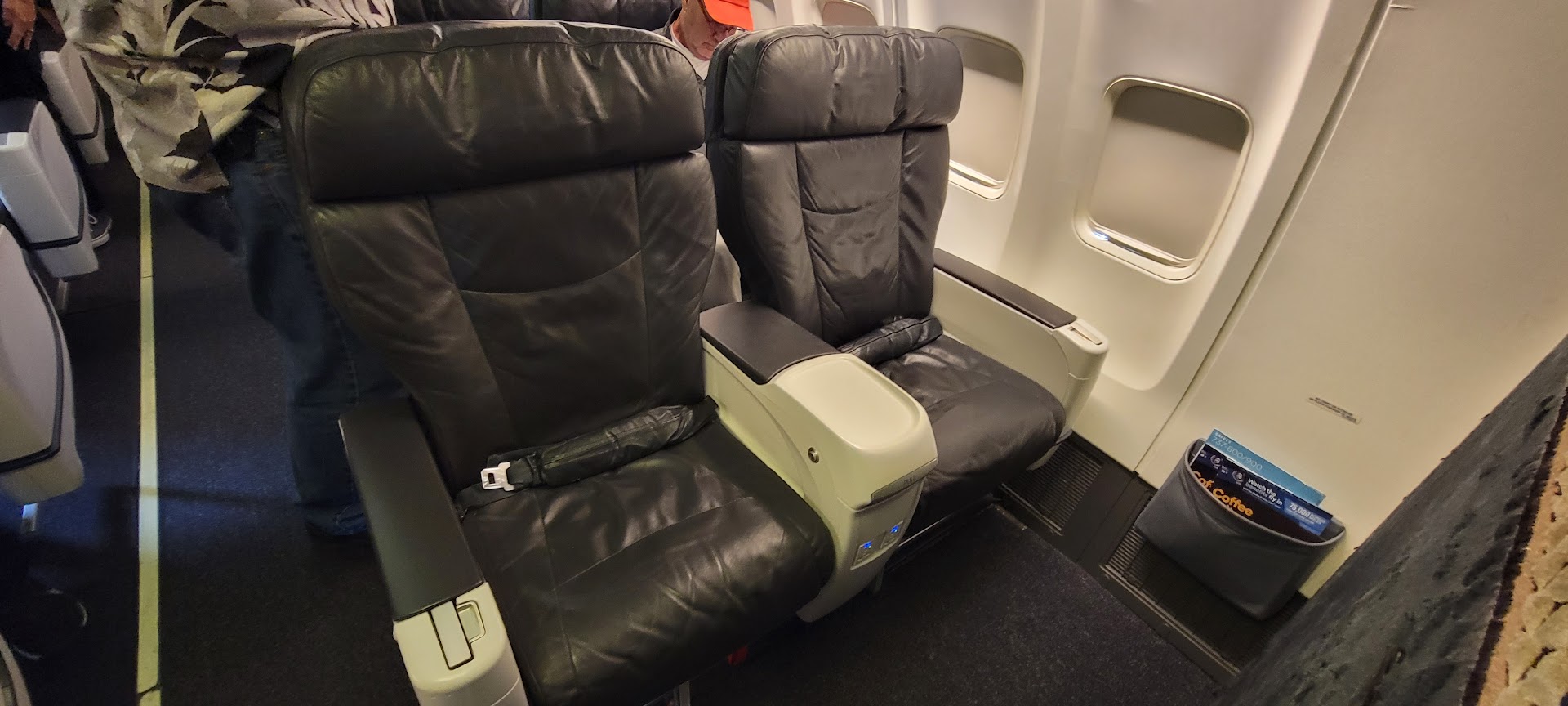
Alaska Airlines First Class
Who Wins, Who Loses?
There are a few things members do lose in Alaska’s changes. Not announced, but in 2026 the first tier of elites (MVPs) will see their free checked baggage allowance reduced from 2 to 1. That’s closer to industry standard, and a result of their oneworld membership – since they gave this benefit to their own members, they had to offer two checked bags to oneworld ruby members as well and that gets expensive.
At the same time, later in 2025 MVP members will get complimentary upgrades (to both extra legroom coach and first class) for companions traveling on the same flight with them.
Additionally, MVP Gold 75K members get a 50,000 mile bonus plus lounge passes and upgrade certificates today but will have to choose their preferred benefits going forward. There’s no takeaway from the top 100K tier, and they get more choices, but 75Ks will see some loss.
Ultimately though I think most members win out with these changes, which isn’t something I’m often able to say (or have often, over the last 8 years really).

Alaska Airlines
More From View from the Wing

Alaska
Alaska Airlines Adds New Routes from Anchorage and Portland

Alaska
Alaska’s congressional delegation reacts to Biden’s planned ban on offshore drilling
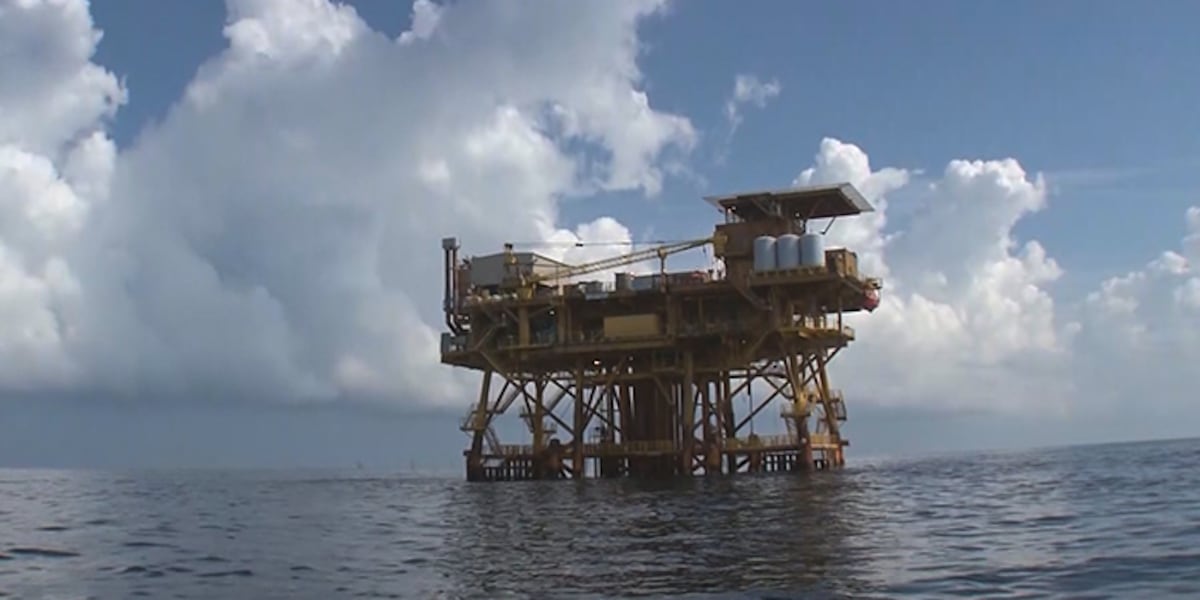
ANCHORAGE, Alaska (KTUU) – Alaska’s congressional delegation is responding on Monday — some members more vocally than others — to the White House’s announcement that President Joe Biden will ban new offshore oil and gas drilling along most of the U.S. coastline.
This order will protect approximately 625 million acres of ocean along America’s Atlantic and Pacific coasts, the Gulf of Mexico, and Alaska’s Bering Sea, citing environmental risks as one of the main reasons for the decision.
In a statement, President Biden, whose term expires in two weeks, said he is using authority under the federal Outer Continental Shelf Lands Act, which gives the president power to withdraw unleased lands from the outer continental shelf indefinitely.
Furthermore, he said that during his term, his administration has conserved more than 670 million acres of America’s lands and waters —more than any other president in history.
“Our country’s remarkable conservation and restoration progress has been locally led by Tribes, farmers and ranchers, fishermen, small businesses, and outdoor recreation enthusiasts across the country. Together, our ‘America the Beautiful’ initiative put the United States on track to meet my ambitious goal to conserve at least 30 percent of our Nation’s lands and waters by 2030,” President Biden said in a statement.
Reacting to the news on social media, newly sworn-in Rep. Nick Begich, R-Alaska, hit the ground running, calling the President a “son of a bitch” in a social media post on “X”.
Begich continued in the post saying, “Events like this should serve as a constant reminder that the Democratic machine is more than willing to sacrifice us all for their sanctimonious, socialist-driven climate science.”
Speaking to Alaska’s News Source on Monday, Begich said sometimes, in Congress, you have to “shout to be heard.”
“I’m sorry that we had to say what we did, but I’m not sorry that we did it, and I will continue to be a strong voice for Alaska while I’m in Congress,” Begich said.
The Biden Administration stated that the withdrawal will safeguard 44 million acres of the Northern Bering Sea, located in far northwest Alaska. The Alaskan congressional delegation has previously opposed proposals to permit oil and gas leasing and drilling in this region.
Opposing what he describes as a last-minute move by the Biden Administration, Sen. Dan Sullivan, R-Alaska, stated on Monday that he has never advocated for resource development in the Bering Sea area, as there is limited resource potential in that region.
Sullivan’s frustration lies in the unilateral process that the Biden Administration aims to use to make such a broad, sweeping move. Furthermore, Sullivan says the administration did not consult Alaska’s congressional delegation before announcing it.
“We’ve had 68 executive orders and executive actions singularly focused on Alaska by the Biden-Harris Administration. They did not consult with us on probably even one of them,” Sullivan said. “It’s no exaggeration to say this administration has sanctioned Alaskans and our energy industry more than he sanctioned the terrorist regimes in Iran and Venezuela.”
Sen. Lisa Murkowski, R-Alaska, echoed Sullivan in a statement released Monday saying she understands the Biden Administration is trying to establish its “environmental legacy” before leaving office, but she believes the “11th-hour” move is the wrong approach.
She went on to say she agrees not all offshore areas need to be available for development and understands the desire of Alaska Tribes in the region to prevent any oil and gas development in nearby waters.
Her frustrations, like Sullivan’s, are broader.
“Cook Inlet is a good example: instead of working with Alaskans to prevent looming energy shortages in Southcentral, the administration has actively worked against our ability to produce more natural gas from that basin. What we have faced over the past four years is an unbalanced policy that has left us on the verge of importing LNG,” Murkowski said.
Speaking to the Biden Administration’s concerns about man-made catastrophes, such as the Deepwater Horizon oil spill that took the lives of eleven people and released millions of barrels of oil into the Gulf of Mexico, Begich acknowledged that the fishing industry is vital to Alaska.
However, he emphasized the importance of examining Alaska’s track record concerning these issues.
“We have the highest environmental standards in Alaska, as of any jurisdiction in the world. When you shut down areas like Alaska, you’re just pushing that work to a jurisdiction with lower environmental standards and a worse record,” Begich said.
When asked about what Alaska’s congressional delegation is doing in light of a new administration that touts the unleashing of Alaska’s national resource potential, Sullivan said he has a meeting scheduled with North Dakota Governor (Doug) Burgum on Tuesday. Burgum has been nominated by President-elect Trump as the new Secretary of the Interior and as the chairman of the newly formed National Energy Council.
“What we’re working on with them is to look at ways in which we can reverse many of these executive orders, either through a Trump Administration executive order or through legislation,” Sullivan said.
He stated the delegation is examining what is known as budget reconciliation provisions.
“We’re going to try and get passed in the law that focus on unleashing American energy. And when you unleash American energy, you have to unleash Alaska,” Sullivan said.
Begich added that unraveling the Biden Administration’s latest order using provisions under the Outer Continental Shelf Lands Act could be difficult and may require an act of Congress.
“The Act that President Biden has invoked has some very specific language that may be challenging to repeal when President Trump takes office,” Begich said.
See a spelling or grammar error? Report it to web@ktuu.com
Copyright 2025 KTUU. All rights reserved.
Alaska
Alaska’s snow crab season is back after 2-year pause, but battered industry faces uncertainty

For two years in a row, the Alaska Department of Fish and Game canceled the snow crab season in the Bering Sea after biologists discovered an estimated 10 billion crabs had mysteriously disappeared — a 90% plunge in the population.
Now, fishermen are once again allowed to catch snow crabs — but they’re facing uncertainty as the species has only rebounded to a small fraction of what it once was. Meanwhile, some are still dealing with the consequences of the two-year pause.
“It’s been extremely difficult,” said commercial fisherman Gabriel Prout, who’s based on Kodiak Island. “There’s not a lot you can do. These boats are specifically designed to go out and catch crab, so we’re over $4 million in debt.”
Biologists blamed the rapid decline of snow crab on a 2018 climate-fueled heatwave. This “warming event” was initially thought of as a rare “lightning strike,” explained research biologist Ben Daly, but the “concern moving forward is that the predictions are suggesting higher frequency of lightning strikes in the future.”
Daly is now developing tracking devices to monitor snow crabs and identify healthy populations for sustainable harvesting.
“It helps us understand their movement patterns in response to environmental changes,” Daly said.
And it’s not just snow crabs that have been affected by warming waters. Other Alaskan species, like Pacific cod, king salmon and pollock have also experienced population decline. Between 2022 and 2023, Alaska’s seafood industry suffered a nearly $2 billion loss, according to NOAA.
That industry extends to fish markets and dinner tables thousands of miles from Alaska. In some places, prices of Alaskan seafood have shot up nearly 60% in just a few years, according to Expana, which monitors pricing across the seafood industry.
“What the customer has to be aware of, more of what you’ll be eating will be imported, more of what you’ll be eating will be less regulated, more of what you’ll be eating will be caught with destructive fishing gear,” said Kenny Belov, who owns a seafood company and restaurant in California’s Bay Area.
In Kodiak, commercial fishing pots have returned to the water this season after officials lifted the two-year ban. The moratorium helped populations, but the quota will only be about a tenth of what it was three seasons ago.
“It’s hard to even consider a plan B when fishing is in my blood. I’m a third-generation fisherman,” Prout said.
For now, it’s a modest lifeline for fishermen who find themselves drifting deeper into the unknown.
-

 Health1 week ago
Health1 week agoNew Year life lessons from country star: 'Never forget where you came from'
-
/cdn.vox-cdn.com/uploads/chorus_asset/file/24982514/Quest_3_dock.jpg)
/cdn.vox-cdn.com/uploads/chorus_asset/file/24982514/Quest_3_dock.jpg) Technology1 week ago
Technology1 week agoMeta’s ‘software update issue’ has been breaking Quest headsets for weeks
-

 Business6 days ago
Business6 days agoThese are the top 7 issues facing the struggling restaurant industry in 2025
-

 Culture6 days ago
Culture6 days agoThe 25 worst losses in college football history, including Baylor’s 2024 entry at Colorado
-

 Sports6 days ago
Sports6 days agoThe top out-of-contract players available as free transfers: Kimmich, De Bruyne, Van Dijk…
-

 Politics5 days ago
Politics5 days agoNew Orleans attacker had 'remote detonator' for explosives in French Quarter, Biden says
-

 Politics4 days ago
Politics4 days agoCarter's judicial picks reshaped the federal bench across the country
-

 Politics3 days ago
Politics3 days agoWho Are the Recipients of the Presidential Medal of Freedom?


:focal(1x0:3000x1565)/static.texastribune.org/media/files/5a3cf938e8dcbdb385730bf87a311d7a/UT%20TIE%20Presser%20LW%20TT%2009.jpg)











